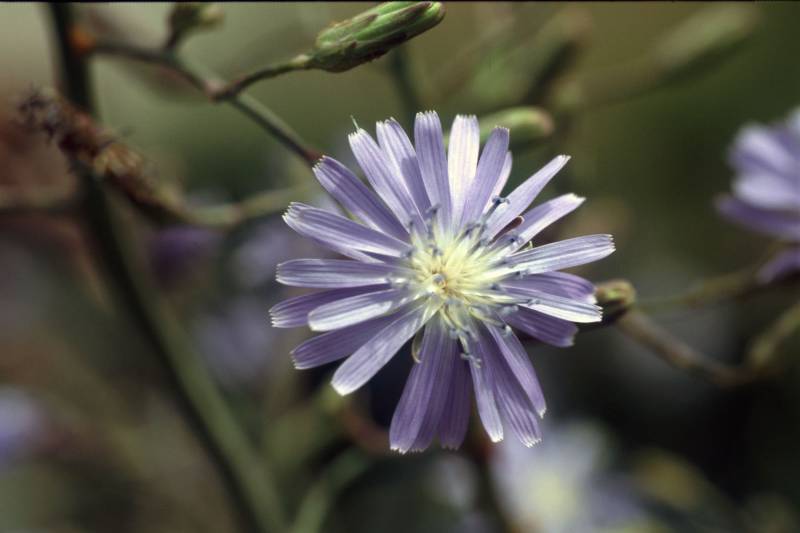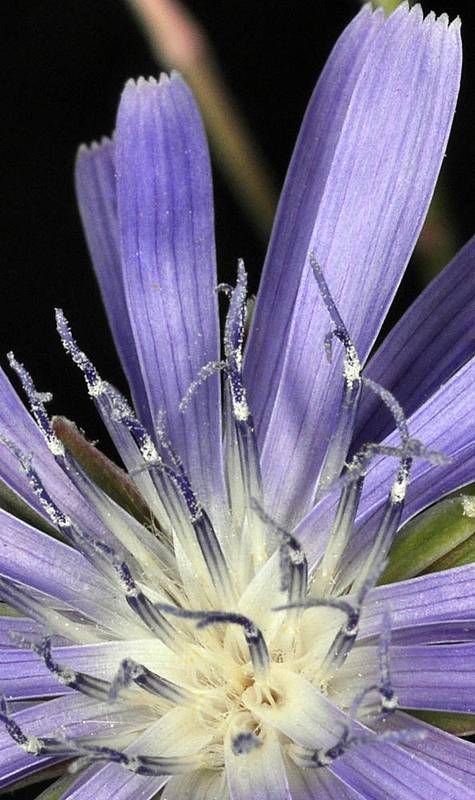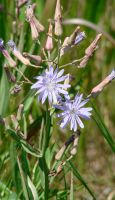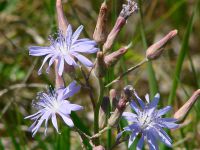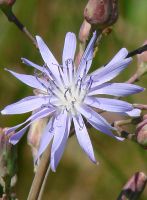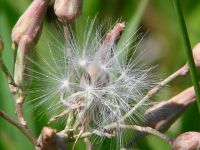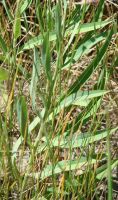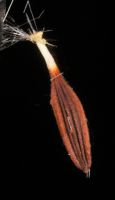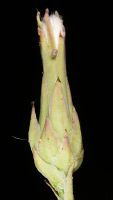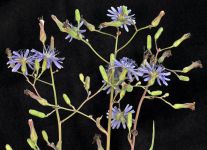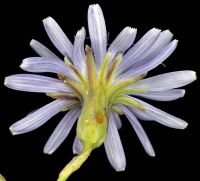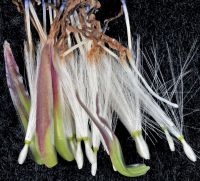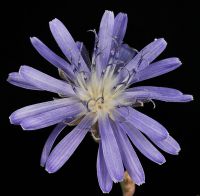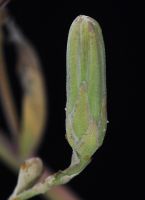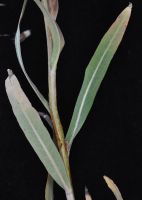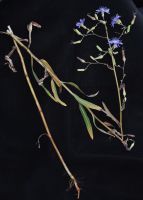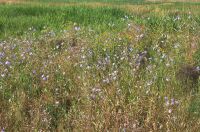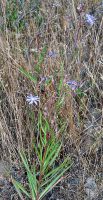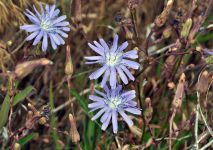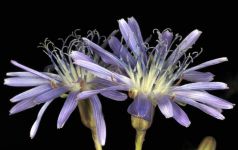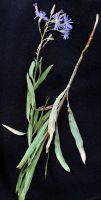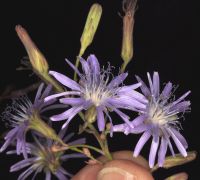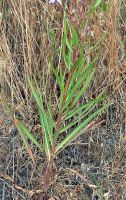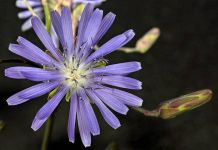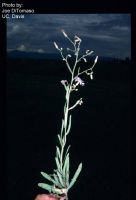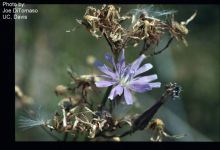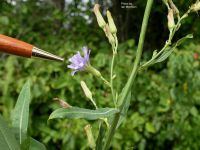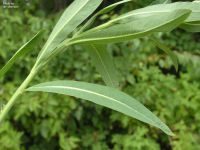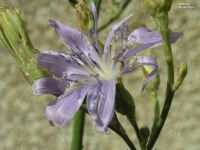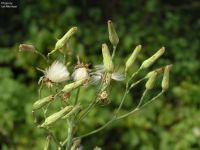Distribution: Occurring east of the Cascades crest in Washington; Alaska to California, east to the Great Plains, Great Lakes region, and northeastern North America.
Habitat: Meadows, thickets, and other moist places at low to middle elevations.
Flowers: June-September
Origin: Native
Growth Duration: Perennial
Conservation Status: Not of concern
Pollination: Bees, flies, beetles, wasps
Glabrous perennial with milky juice from a deep-seated, creeping root, the stem 2-10 dm. high.
Leaves alternate, elongate, 5-18 cm. long and 6-35 mm. wide, entire, or the lower ones lobed, occasionally sharply denticulate, often glaucous beneath.
Inflorescence an open panicle, with several or numerous heads, these 18- to 50-flowered; corollas blue, all ligulate; involucre cylindric, 15-20 mm. high; pappus of numerous capillary bristles.
Inflorescence an open panicle, with several or numerous heads, these 18- to 50-flowered; corollas blue, all ligulate; involucre cylindric, 15-20 mm. high; pappus of numerous capillary bristles.
Publication: Madroño 5: 123. 1939.
Lactuca tatarica (L.) C.A. Mey. var. pulchella (Pursh) Breitung
Mulgedium oblongifolium (Nutt.) Reveal
Mulgedium pulchellum (Pursh) G. Don [FNA19]
PNW Herbaria: Specimen records of Lactuca tatarica ssp. pulchella in the Consortium of Pacific Northwest Herbaria database
WA Flora Checklist: Lactuca tatarica ssp. pulchella checklist entry
OregonFlora: Lactuca tatarica ssp. pulchella information
E-Flora BC: Lactuca tatarica ssp. pulchella atlas page
CalPhotos: Lactuca tatarica ssp. pulchella photos

